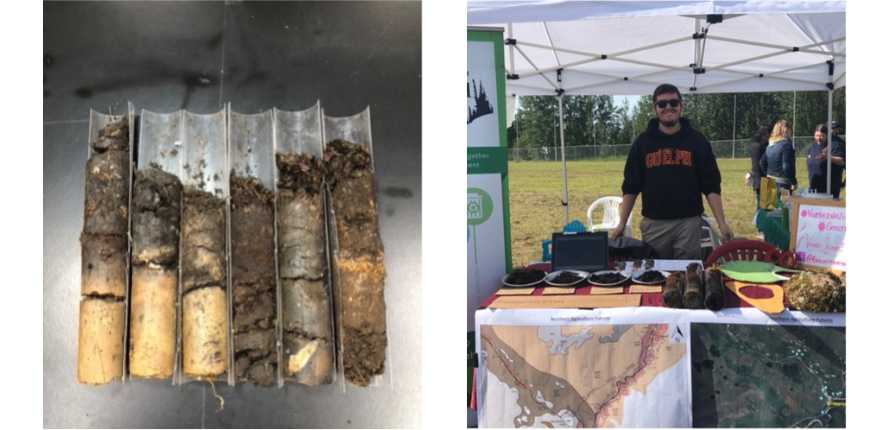We use cookies on this site to enhance your experience.
By selecting “Accept” and continuing to use this website, you consent to the use of cookies.
Search for academic programs, residence, tours and events and more.
As climate change impacts the northern landscape and expands agricultural opportunities, it is important to consider how land use changes will impact soil carbon and what it will mean for communities in the North.

Soil cores; David at the Enterprise Gateway Jamboree, August 2019
Climate change is causing rapid warming across many northern regions and disproportionately affecting ecosystems that northern communities rely upon for traditional food sources. However, climate change is also expanding the range of potentially suitable agricultural land northward, and this is leading to many communities and farmers considering and implementing local food production. However, the conversion of boreal forest to agriculture may degrade the carbon rich soils that characterize the region, resulting in large carbon losses to the atmosphere and negatively and potentially further accelerating the effects of climate change. As a result, it is essential to understand the extent of the environmental impacts of agriculture in northern ecosystems and develop methods and tools to produce sustainable sources of food, while mitigating any trade-offs.
To understand the impact of northern agriculture on soil carbon and to help northern communities find areas that agriculture would be best suited, David Bysouth, a PhD candidate in the department of Integrative Biology at the University of Guelph, is working on 3 projects:
Our research showed that converting boreal forest to agriculture:
Our research team also found that the soils in the Kakisa to Enterprise area are:
Converting sections of the forest to agriculture will likely result in short term carbon losses to the atmosphere. However, there is the potential to mitigate these losses with the development of agriculture management strategies that promote crop growth but limit soil carbon losses. Also, agriculture can be conducted in ways that minimizes disturbances to the soil. Using areas that are already cleared of trees, areas that have been abandoned, and areas that have lower initial soil carbon can all be effective ways to minimize soil carbon loss. The use of maps produced from this data can help to identify areas that have the highest potential for agriculture, but the lowest amount of soil carbon to be lost. This will ensure that Kakisa and Enterprise can effectively select areas for agriculture that promote sustainable food production while minimizing environmental impact.